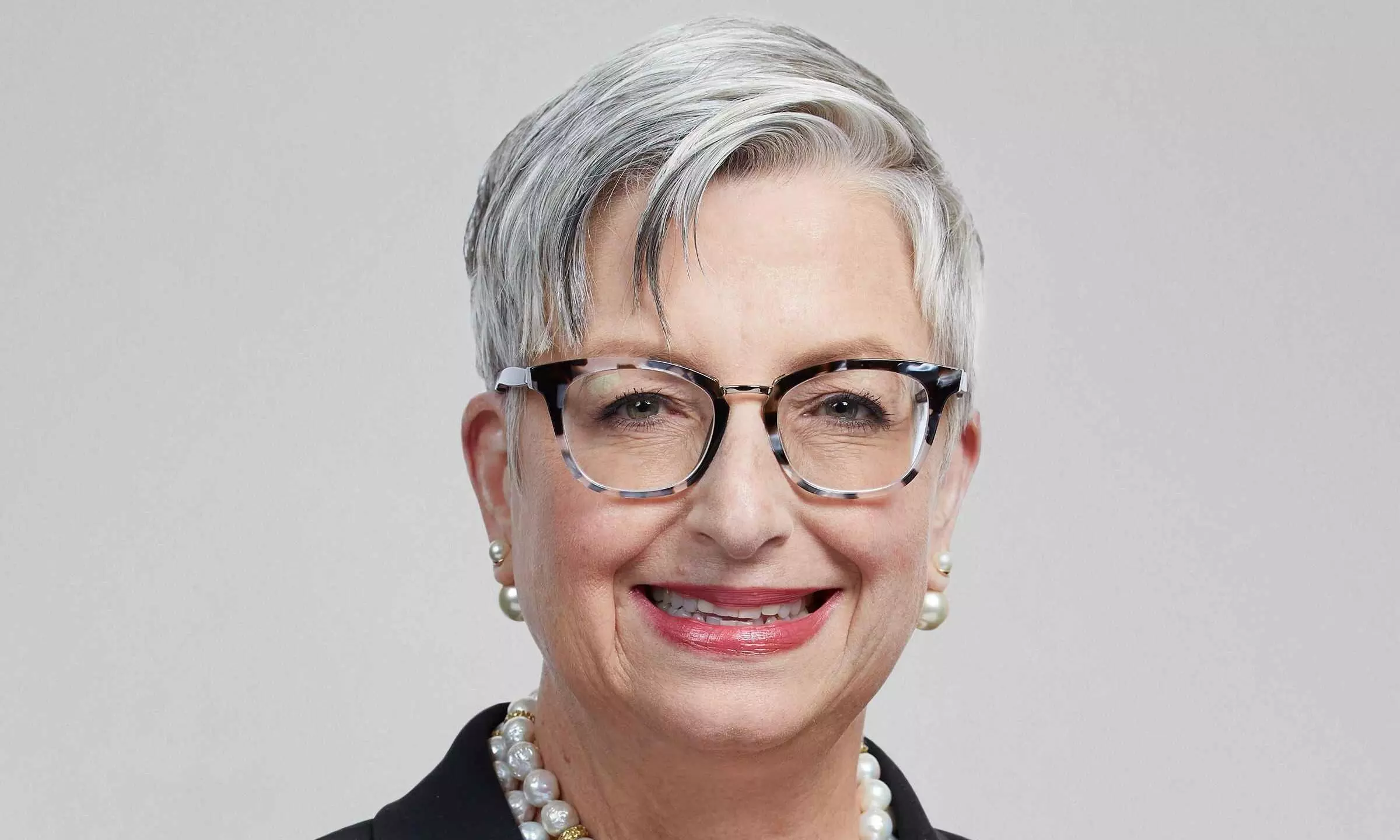
UPS is moving from "better not bigger" to "better and bolder"
UPS chief executive Carol Tomé says that her company is building on the strong foundation of its "better not bigger" approach and moving into the next phase of its strategic framework, "better and bolder."

Carol Tomé, Chief Executive Officer, UPS (Photo: UPS)
Speaking in an earnings conference call immediately after announcing the third quarter (Q3 2022) financial numbers, Carol Tomé, Chief Executive Officer of United Parcel Service (UPS), said, "this was our highest third quarter consolidated operating margin in 15 years".
Consolidated operating margin expanded to 13 per cent, a 20 basis point improvement from last year. For the third quarter, consolidated revenue rose 4.2 per cent from last year to $24.2 billion and operating profit grew 6 per cent to $3.1 billion.
Tomé also reaffirmed UPS' 2022 targets of consolidated revenue of around $102billion, consolidated operating margin of about 13.7 per cent and return on invested capital greater than 30 per cent.
"In the face of a very dynamic macro environment, we are demonstrating more agility than ever before. We are focused on controlling what we can control. And under our better and bolder framework, we are combining digital capabilities with our global integrated network to continue winning in the most attractive parts of the market, driving operational excellence and delivering best-in-class service for our customers," she said in the call.
Tomé's upbeat mood is quite the opposite of the sentiments aired by her chief rival FedEx, which pulled its forecast last month and warned deteriorating macro conditions.
In September, FedEx withdrew the financial forecast it had issued earlier, saying a global demand slowdown accelerated at the end of August and was on pace to worsen in the November quarter. Interestingly, the withdrawal of guidance by FedEx dragged down shares of rival package delivery companies including UPS then.
Tomé said that the execution of UPS' customer first, people-led, innovation-driven strategy has fundamentally improved to nearly every aspect of its business, causing better revenue quality, higher operating margins and improved bottom line results. She acknowledges the macroeconomic challenges but she said: "we are not going to be the victim to that".
Tomé said that UPS is building on the strong foundation of its "better-not-bigger" approach and moving into the next phase of its strategic framework, "better and bolder".
"This is about moving faster to win in our targeted market segments and combining digital capabilities with our global integrated network to create a powerful offering of logistics as a service. We are continuing to leverage the agility of our global integrated network to deliver outstanding service for our customers, and we're bringing that momentum with us into peak," she said.
Explaining what "better and bolder" means Tomé said that the "better" part of the framework is not changing. "We will continue to focus on growing value share, improving the customer experience and driving higher productivity from the assets we own."
According to her, "bolder" is about moving faster to grow in UPS' targeted market segment. It's also about combining digital solutions with the global integrated network of UPS to create more value for its customers and new revenue opportunities.
"We plan to combine the capabilities of our strong standalone digital services, including Roadie, Coyote, delivery solutions, UPS Capital and our partnership with CommerceHub, to create a powerful offering of logistics as a service. And when we combine logistics as a service with our integrated physical network, we believe we will be unstoppable."
Tomé gave two concrete examples to substantiate how the next phase of the strategic framework, "better and bolder", is taking shape. UPS had introduced its upstream delivery density solution in the last quarter earnings call. Here, UPS is building a digital platform that goes upstream to look at orders, in other words, packages at the shopping card level. It then matches this new order with other orders that have the same delivery day commitment, which creates delivery density.
"We have gone live with one customer and we are delighted with the results we have seen. In fact, we are currently on boarding several new customers to the platform," Tomé said.
The second example of "better and bolder" is UPS' pending acquisition of Bomi Group. In August this year, UPS had announced its decision to acquire Bomi Group, an industry-leading multinational healthcare logistics provider. The transaction will add temperature-controlled facilities in 14 countries and nearly 3,000 highly-skilled Bomi Group team members to the UPS Healthcare network in Europe and Latin America. "Along with our recent expansion of UPS Premier in Europe, we are on track to generate at least $10 billion in healthcare revenue in 2023," Tomé said.
UPS expects to generate at least $10 billion in healthcare revenue in 2023 (Photo: UPS)
Tomé also drew attention to the customer first strategy, which according to her is about creating a frictionless customer experience targeted at the parts of the market where it wants to grow, including small and medium businesses (SMBs), healthcare, international and certain large enterprise accounts.
UPS is leaning into segments that really value its end-to-end network. UPS has recorded strong improvements in revenue quality and those efforts continue to deliver results as revenue per piece increased 9.8 per cent.
"One of the segments is SMBs where we see significant growth now making up nearly 30 per cent of our business. We will continue to lean into that customer segment, which is actually growing. We are not providing just great service but we are simplifying the way this customer deals with us. We have 16 customer journeys to ensure that the experience with us is seamless and frictionless and making good progress against those journeys."
In an interview to CNBC, Tomé said value is defined by what the customer is willing to pay for. "What our customers are willing to pay for is excellent service." According to her, UPS has the best on-time performance. "As we head into the peak season, volumes are going to peak up and service really matters. For last four peaks our service has outperformed everybody else in the industry and customers are willing to pay for."
Amazon continues to be the largest customer for UPS and brings in 11 per cent of its revenue. However, UPS has been reducing the volume of Amazon packages carried on its network and that capacity is going to higher margin customers. "We have reached an agreement with our largest customer (read Amazon) about the volume that we will take into our network and the volume that they will deliver. So, it's just a function of that contractual arrangement. It gives us room to invite additional customers into our network and give them the rate service during peak, which we are doing. That is all part of better not bigger," Tomé said in the call.
Given the global economic softening, Tomé said UPS is convinced that a relentless focus on customer first matters now more than ever before. "We believe our strategy is working, because we have continued to gain share. For example, we are leveraging our time in transit and visibility advantages in Europe to win. In fact, we grew Europe export volume in the third quarter," she added.

